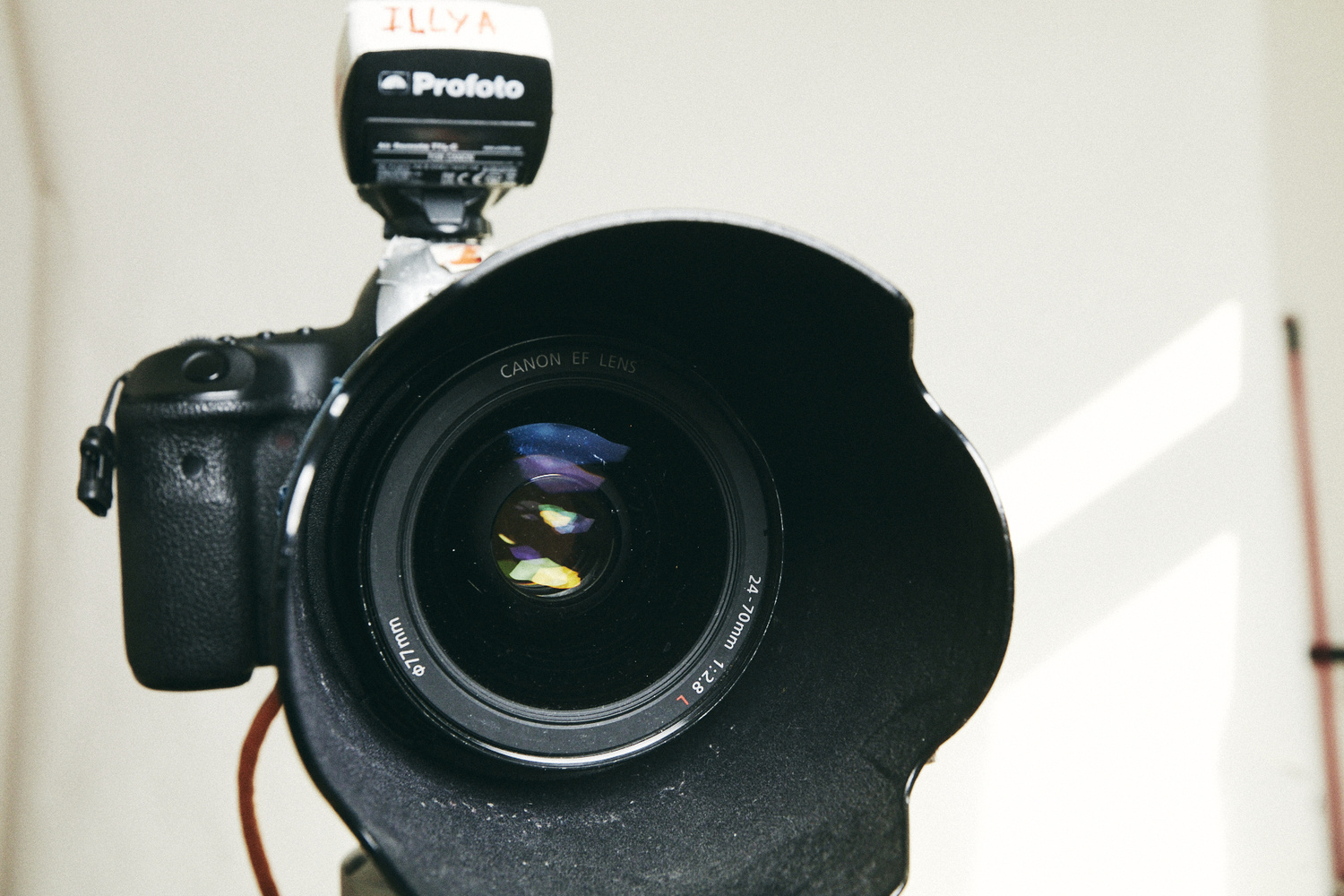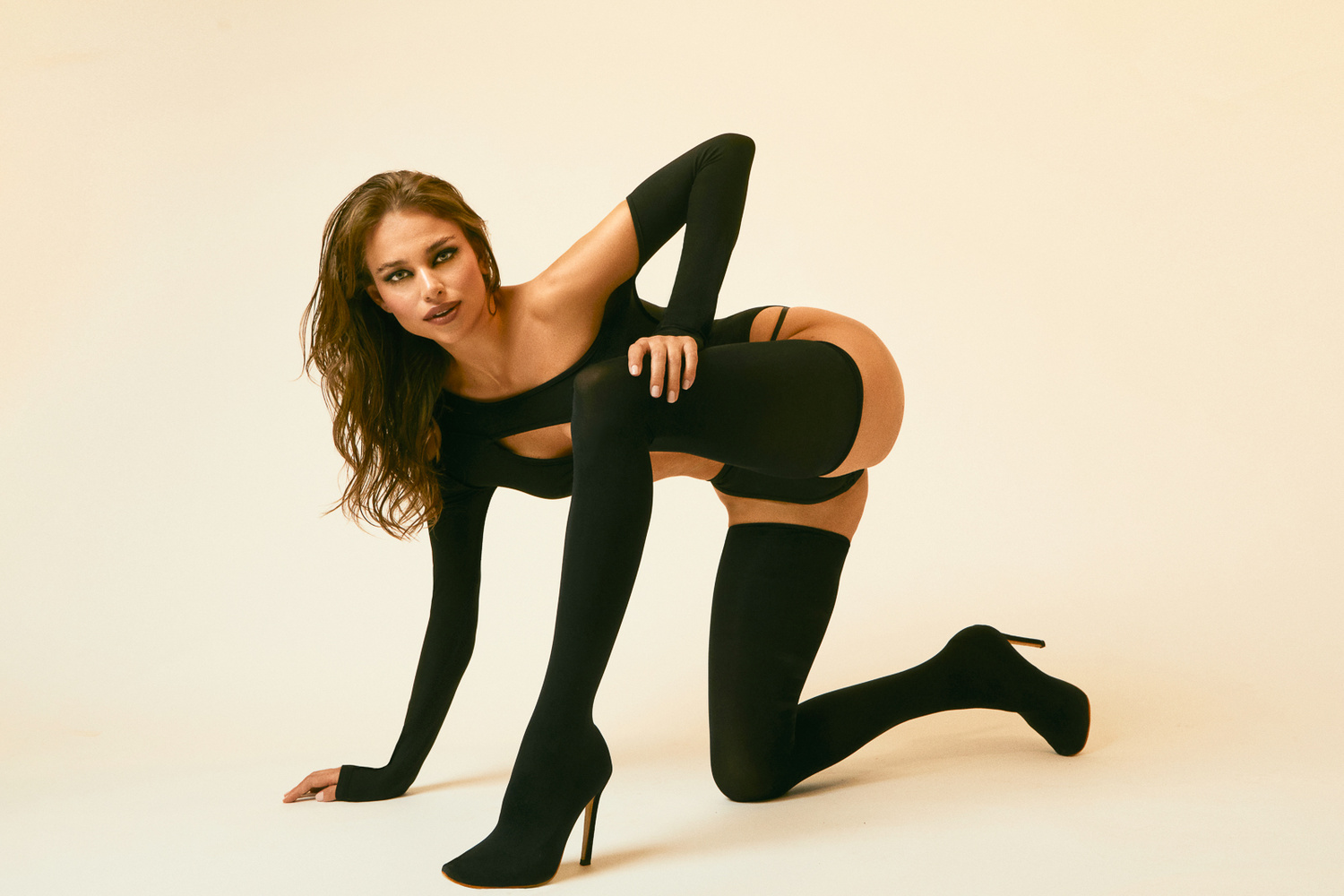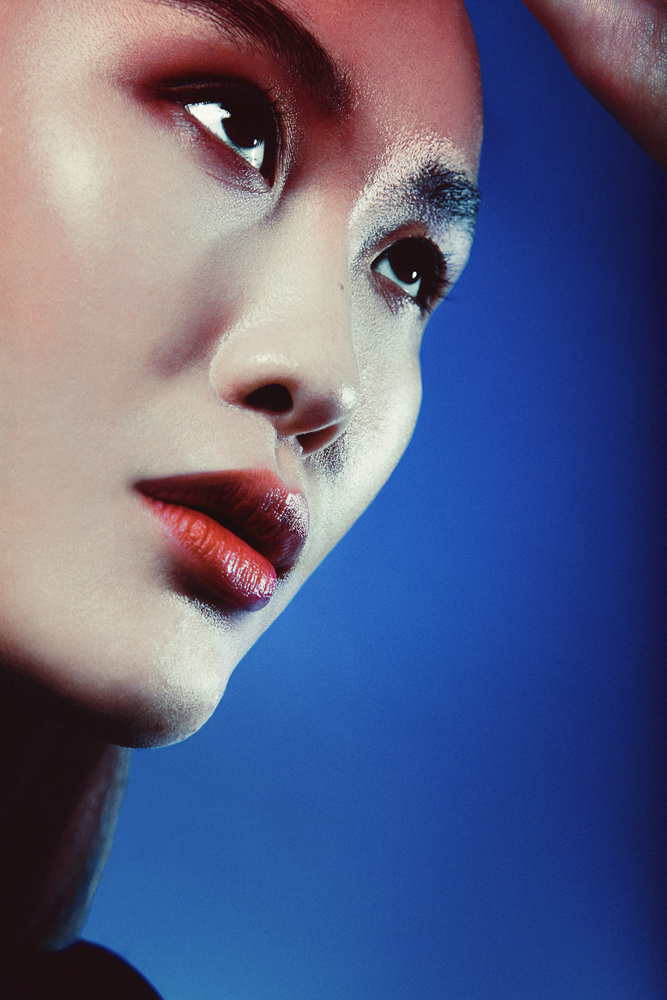Why would anyone shot with an antique lens from the days of Britney spears and the spice girls? Well, while our opinions of their music might differ, we call can agree that the Canon EF 24-70 f/2.8 is still an awesome lens, despite being as old as Nickelback's “How You Remind Me”.There are two reasons someone would use old gear over new one: they’re broke, or they’re allergic to spending money. I’ve been both, and this lens has seen me go broke as well as become very money-conscious because of it. The one thing I learned from living off baked beans and bread was that you don’t spend money on something unless you absolutely have to. So to clear out any questions on why I haven’t upgraded, I will say that I don’t see the upgrade as my top priority. The Canon EF 24-70 f/2.8 is plenty good to be a lens in a professional’s arsenal in 2023.
Now let’s get to the meat of the review and see where this lens shines and where it falls short. On the upside, it is perhaps the most cost-effective 24-70mm f/2.8 you can buy. On the downside, it is not the sharpest lens available compared to modern units. Then again, how bad can it be? Let’s see.

The Pros
Build Quality
First things first this lens is built like a tank. As you can see from my very copy, this lens can take quite the beating. This lens outlived camera bodies, intense international travel, drunk people at events, me falling on it, and a lot of more embarrassing things. I really can swear by its reliability. Even after the plastic snapped, I just put some tape over it and it was back to normal. The optics and internals were not damaged a bit.

The lens is made out of metal and plastic, featuring a metal lens mount which adds a lot of years to the longevity. After so many years, the lens still feels extremely smooth on the zoom ring. It also felt smooth on the focus ring before I taped over it. Compared to a lot of other L lenses of that time, it feels much nicer. For example, the EF 24-105 f/4, while featuring IS feels a little more stubborn and hard to manipulate. Another benefit is the metal filter threads. Unfortunately, mine have been bent at this point, but unlike a plastic thread, I bent mine back in shape.
Compared to the new Canon EF 24-70 f/2.8 II, this lens is far better built. This is a real bummer for me as you’d expect newer designs to be an improvement of the old ones, not the opposite.
Lastly, a word has to be said about the weather sealing of this lens. A few wildlife and sports photographers have said that they have shot in pouring rain with this and never had any issues. The most I’ve done is some rain, but then again, I never had any issues either. Just make sure to use it with the lens hood to be fully sure that nothing is getting between the two barrels.
Versatility
The focal length range of this lens is perhaps one of the reasons it is so popular among so many photographers. While I tend to prefer specialized equipment over general one, I can’t find a single lens that does as good of a job as the 24-70mm. you can use it for anything from light macro photography to group pictures, to landscape. My copy of this lens lives on the camera and I never think about getting a different lens out on most productions. The wide aperture makes it suited for low-light work, while the zoom range means you can conrol your composition very well and photograph without having to crop in the future. This lens alone is enough reason to not use a dozen primes for me.

Price
Lasnlt’y one of the big pros of the Canon EF 24-70 f/2.8 is the price it retails at. Currently, you can find a used copy in good condition for anywhere between $700-$1,000 USD. What is crazier, you might get lucky and find one for $500, which was my case. Compared to other lenses that offer similar performance, this one is nearly impossible to beat price-wise.
The Cons
Sharpness
This lens performs really well at f/2.8 at all zoom ranges. Lens sharpness really doesn’t change that much between f/2.8-f/11, after which you might start seeing diffraction and unwanted loss of detail. I would not say that this lens is a bad performer, however of course as this is a review in hindsight, modern variants have to be considered. And the truth is that yes version II of this lens is sharper by a lot. Yet again, lens sharpness is almost a made-up concept that is confused with scene sharpness. You might have the best glass on the block, but if your subject is moving too fast, or perhaps the flash duration is too long, or the focus is slightly off, lens sharpness won’t make any difference. This is exactly why when I worked with top-of-the-range Profoto Pro-11 packs and a static subject, I captured my sharpest work on a not-so-sharp lens.
Vignetting
This becomes a big con if you are shooting on film. The images vignertte a lot at 24mm f/2.8. So much so that I would advise to not shoot film in this setting. Then again, if you are on a digital camera with illumination control, you won’t see significant differences with vignetting. Another option is to shoot on an APS-C camera, which naturally captures a smaller image circle. In fact, if you are looking for the best performance from a full-frame lens, use that lens on a smaller sensor camera. It will capture only the strongest part of the image circle, leaving out the corner vignetting and sharpness.

Newer Versions Are Better
This lens is aging, and version II, let alone the RF, offers significantly better optical quality. It is sharper in the corners, as well as far better at resolving fine detail. So much so, that you might be surprised by how good the RF glass is if you’ve never used it before. Again, though, this depends largely on the style of your work. If you are someone who crops heavily, pixel-peeps, or just values detail a lot, the EF 24-70mm f/2.8 I is not for you. If you can justify the upgrade to sharper and better glass from this relatively old inexpensive one, go for it. Some time ago I was pondering an upgrade to version II, however, I found it hard to justify given the type of content I am shooting.
What I Liked
- Build Quality
- Reliability
- Price
What Could Be Improved
- New versions are better
- Sharpness (compared to modern variants)
- Vignetting
Closing Thoughts
Unlike the music of 2002, this lens is as relevant today as it was back then. It is a well-built unit that can withstand years of use without worry. As a professional photographer, I value reliability over sharpness and vignetting which are fixable. Lastly, a thing I also value this lens for is the return on investment. Without this lens I would not be able to do a lot of my work, however version I is plenty for professional work in 2023 and I don’t see a reason to upgrade in most cases.
What do you think about the Canon EF 24-70 f/2.8? Is it outdated, or do you still use it for your photography? Let us know in the comments below!









Large pieces of duct tape will leave a goopy mess on your gear. Pro gaff tape is better especially if you need that much.
I've always believed being able to manually focus a lens as needed to be quite important.
Upgrading to the newer 24-70 was worth every penny.
I never use duct tape on lenses proper, but hoods are fair game. If a hood is cracked gaff tape won't hold it together near as well as duct tape does. Black duct tape is less noticeable than the more common silver/gray variety.
I still have one of these (and the rest of the f/2.8L trinity of similar vintage) but it rarely gets used anymore. I captured some great images with it, but as I started adding newer lenses to my kit, its weaknesses became more apparent. Today, I prefer the sharpness and contrast that I get with Sigma Art lenses.
I still use mine quite often. I rarely get out the EF 50mm f/1.4 any more unless I want to "run light" for an extended shooting day. I do tend to use the EF 35mm f/2 IS when image stabilization comes into play. But when the camera is on a tripod the 24-70 mostly stays on the camera unless I need a focal length longer than 70mm.
If I know the shooting environment will be hazardous (heavy crowd of mostly drunk people, rain or snow, blowing dust or sand, etc.) I'll use the EF 24-105mm f/4 L IS instead and leave the more fragile 24-70 in the bag. I'll also use the 24-105 IS when shooting on a non-stable platform, such as a temporary outdoor concert stage vibrating with the energy of the loud music being made on it, though in that scenario I'm shooting mostly with a longer lens (70-200/2.8 or 135/2) attached to the other body.
Pros: The retrofocus design throughout the entire focal length range, with the lens fully extended at 24mm and fully retracted at 70mm, allows the lens hood mounted on the main barrel to be more optimal throughout the zoom range than zoom lenses with the hood attached to the secondary barrel. With the secondary barrel and the front optical elements retracted the static hood protects a narrower angle of view from off axis light at longer focal lengths. With the secondary barrel extended the static hood allows a much wider angle of view at shorter focal lengths.
Due to being attached to the main barrel the heavy duty hood isolates the secondary barrel from bumps and bangs as it extends.
Cons: Due to its retrofocus design, the key optical adjustments are located near the front of the lens and can be misaligned by relatively tame impacts, especially when the secondary barrel containing the front elements is extended. (I never use my EF 24-70 in a public setting without the hood in place for this reason.)
Using polarizers or square filters can be anywhere from problematic to impossible with the hood attached.
Misunderstood "disadvantages": equating improved corner acutance when the lens is optimally focused for the center of the field with overall "sharpness" leads to false presumptions. It's not so much the lens is not sharp on the edges as it is that field curvature means the edges will be focused at slightly closer distance than the center. Think portion of a sphere rather than a plane in terms of field focus. This can be used to the photographer's advantage in certain situations. It's also immaterial with any shooting scenario where the edges and corners are intentionally defocused. It's only a disadvantage when imaging flat subjects parallel to the camera's imaging plane. So unless you're concerned with flat document reproduction it's not near the concern many make it out to be. I guess if you want to be remembered as the "sharpest" test chart photographer in history it could be a problem.
Still have my version of this lens. Its a Tank! Its been dropped, stepped on and still works A+. One of the best investments I ever made in a lens.
The series II 24-70 is my go-to lens and probably stays on the camera 80 percent of the time. A lot of folks like the 24-105, but I bought the 24-70 because I thought it might be sharper than a longer-range zoom. What do you think?
The 24-70 is sharper but I've seen the 24-105 used on VOGUE covers. I wish for a 28-85.
A lot of pretty good images have been made using the 24-105 as well as the 24-70. I have both the original 24-105/4 and the original 24-70/2.8. They both have use cases where one is better than the other. But then I tend to worry more about light, composition, color, etc. than about being obsessed over whether there might be another lens that is sharper at the pixel-peeping level compared to what I'm using.
The 24-70 II is, like almost all zoom lenses, sharpest at its widest focal length. It's still very sharp at 70mm, but the most recent 70-200/2.8 lenses are also pretty sharp. By the time you crop a shot taken at 70mm with the 24-70 to the same angle of view as what you would get at 100mm with a 70-200 and view both at the same display size, you've lost more than the very slight difference in absolute sharpness when both are their respective prescribed distances for a test chart to fill the frame of each.
I had the 24-70 f2.8 mk1 and it was soft as hell at 24mm f2.8 it had to be stopped down to become sharp, I upgraded to the mk2 which is much much better
So you had an outlier that needed adjustment to proper optical alignment.
I have the newer version, and it stays on my camera for the majority of the time. Sweetest, and heaviest, lens I have and I love it.
I like the article because it was a change of pace from what we usually see here. This said it all for me: "There are two reasons someone would use old gear over new one: they’re broke, or they’re allergic to spending money. I’ve been both, and this lens has seen me go broke as well as become very money-conscious because of it. The one thing I learned from living off baked beans and bread was that you don’t spend money on something unless you absolutely have to."
Here is a working photographer who has weathered the financial hardships of this profession and made his equipment work as best as possible. It's very important to understand that only a severe pixel peeper would really notice the differences between newer and older versions of this lens. I have the new version. Nevertheless, in this class, most lenses are pretty good....
You may want to fix that typo in the first line. "Why would anyone SHOOT..."